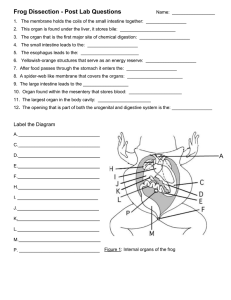

Integrate quantitative or technical information expressed in words in a text with a version of that information expressed visually (e.g., in a flowchart, diagram, model, graph, or table).Ĭompare and contrast the information gained from experiments, simulations, video, or multimedia sources with that gained from reading a text on the same topic.įollow precisely a complex multistep procedure when carrying out experiments, taking measurements, or performing technical tasks, attending to special cases or exceptions defined in the text.

Additionally, the app includes the step-by-step process for a wet lab, with visual and written instructions for setting up, prepping a frog, and cleaning up.įollow precisely a multistep procedure when carrying out experiments, taking measurements, or performing technical tasks. There are even some interactive activities to show how two of the frog body systems work (Digestive System and Respiratory System). Students can take a quiz to test their frog-anatomy skills, learn characteristics of frogs in a virtual encyclopedia, watch a frog develop through its life cycle, compare frog anatomy with human anatomy, and watch animated videos of frog behaviors in the wild. The app offers several options in addition to the dissection, many of them interactive. Then students can rotate the organs to study them from all sides.


What lies beneath the skin and muscles? Students will find beautifully labeled organs with the option to tap each one to learn detailed information about what the organs do and how they interact with the other organs. Students get the chance to use pins, a marker, a scalpel, scissors, and forceps. Through voice-guided instructions, students work step by step through a dissection by dragging the correct tools to a pan and making virtual incisions when needed.


 0 kommentar(er)
0 kommentar(er)
